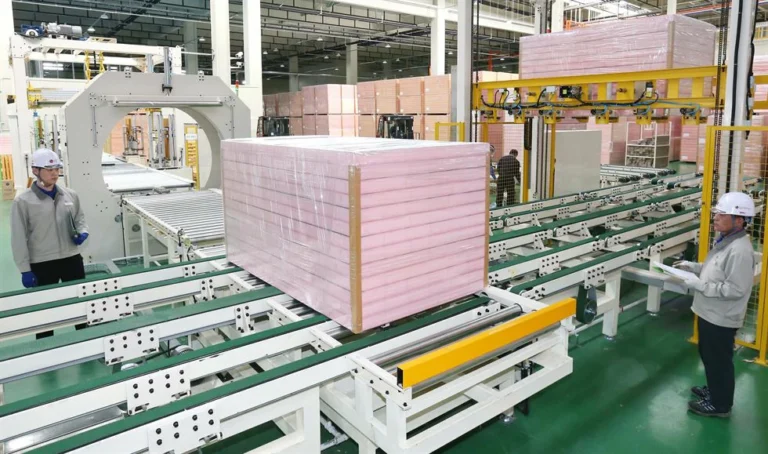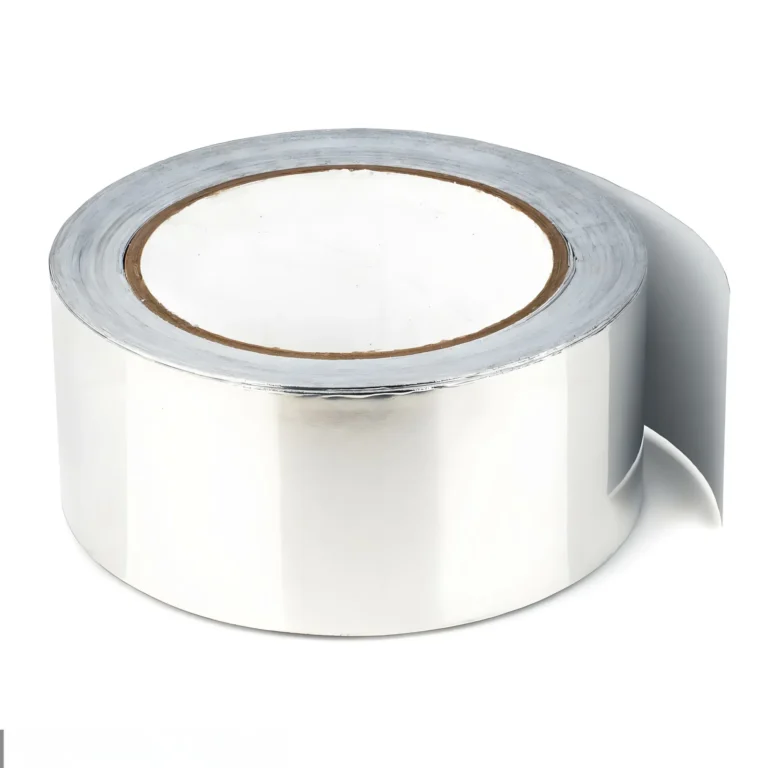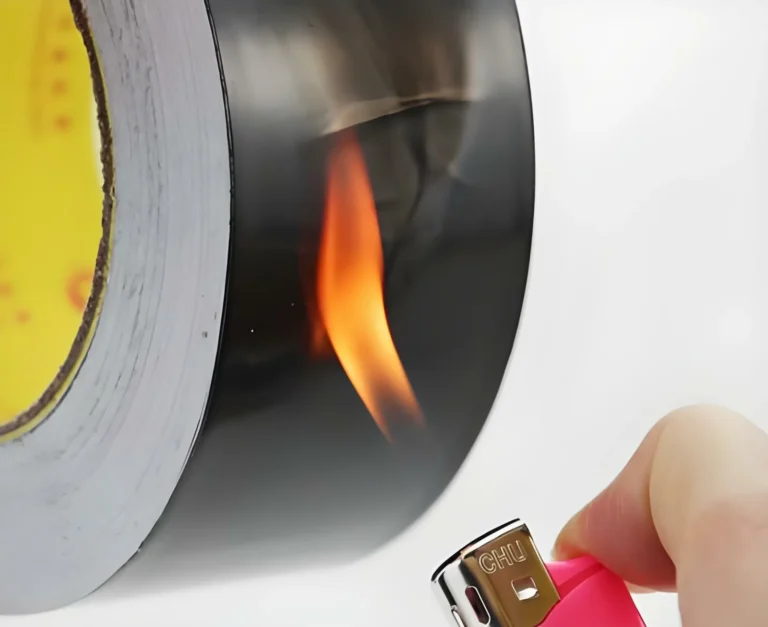Heat Energy: The Invisible Powerhouse
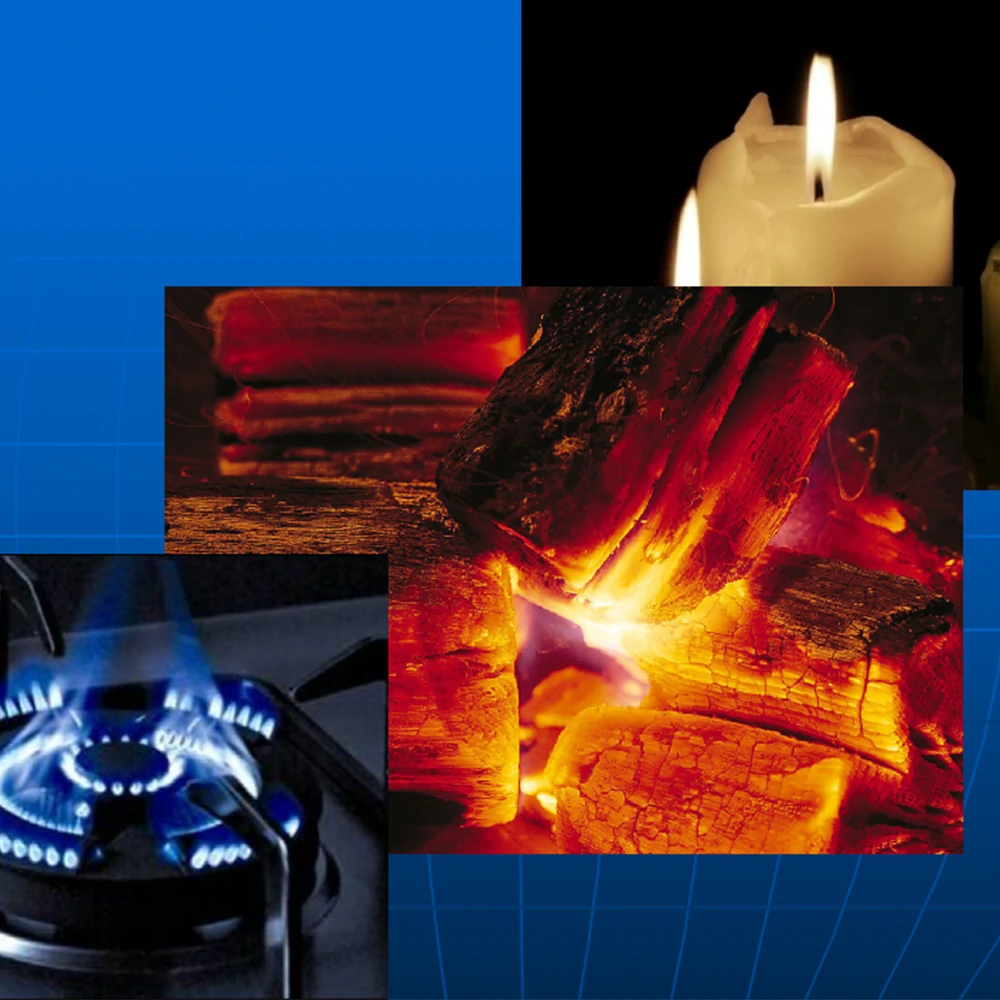
Heat energy is the unseen force that powers countless industrial processes, from manufacturing to climate control systems. It is the kinetic energy of atoms and molecules in motion, essential for transforming and using different forms of energy.
The Nature of Thermal Energy
In the world of physics, thermal energy measures the total kinetic energy of atoms in a substance. When atoms and molecules move, they give off heat, a basic form of energy transfer that is key to understanding how heat works. Industrial heating and cooling systems use this energy to control temperatures, which is vital for keeping products in good condition and for chemical reactions.
Mechanisms of Heat Transfer
Industries use three main ways to transfer heat: conduction, convection, and radiation. Conduction happens when heat energy moves from one atom to another, depending on the material and its specific heat. Metals, with their tightly packed atoms, are great conductors, and this is used in heat exchangers and electronic cooling systems.
The Role of Convection
Convection occurs in fluids like air or water. When these fluids get hot, they expand and rise, pushing cooler fluid down, which then heats up. This cycle is crucial in HVAC systems and affects the design of everything from home radiators to industrial furnaces.
Radiation: Heat Transfer Without a Medium
Radiation is different because it does not need a medium and can happen in a vacuum. It involves infrared radiation, like the warmth we feel from the earth’s surface when sunlight hits it or the heat from a light bulb filament. Electromagnetic radiation, including infrared and radio waves, travels at the speed of light and can be absorbed or reflected by different surfaces. This is important for designing thermal insulation materials.
The Direction of Heat Flow
A basic rule of thermodynamics is that heat energy moves from warmer to cooler areas. Knowing how heat travels is important for improving energy efficiency in industry. For example, thermal barriers are designed to reduce unwanted heat flow, saving energy and cutting costs.
Material Properties and Thermal Management
Materials can conduct, store, and release heat. Scientific terms like thermal conductivity, heat capacity, and emissivity describe these properties. Thermal conductivity is measured in W/m·K, heat capacity in J/g°C, and emissivity is a dimensionless coefficient. These values are carefully calculated to make sure industrial materials can handle the demands of thermal management.
The Symphony of Heat Movement
The complex movement of heat, often referred to as the “heat mover,” is a physical symphony, with heat energy flow playing a key role in the efficiency and effectiveness of industrial processes. Understanding conduction, convection, and radiation not only helps in creating new materials but also in using energy wisely in many areas, from deep inside the earth to high in the atmosphere.
Direction of Heat Transfer
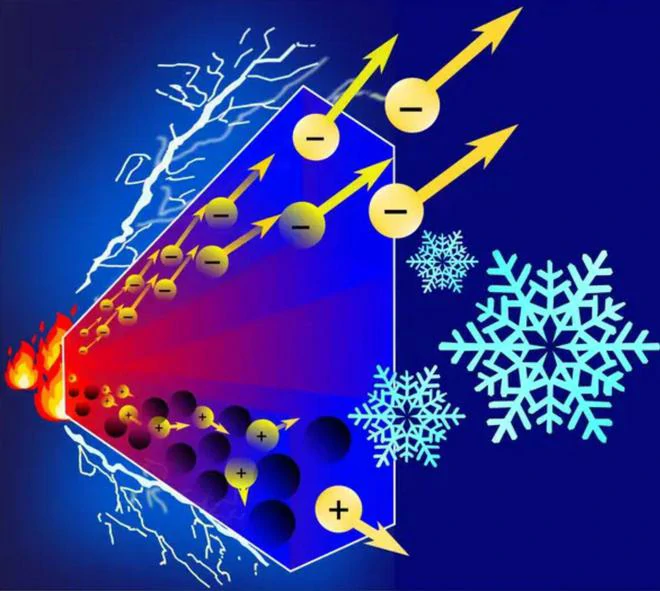
The Fundamental Rule of Heat Transfer
In thermodynamics, heat transfer follows a basic rule: thermal energy moves from areas with higher temperatures to those with lower temperatures. This principle guides the design of heat-reflective materials, aiming to control the direction of heat flow.
What Direction Does Heat Travel?
The direction of heat transfer is from high to low. The transfer of heat from a high-temperature object to a low-temperature object, or from a high-temperature part of an object to a low-temperature part, is called heat transfer. Heat transfer is a natural phenomenon that is ubiquitous in nature. As long as there is a temperature difference between objects or between different parts of the same object, heat transfer will occur and will continue until the temperatures are the same.
There are three main ways for heat to spread: conduction, convection, and radiation.
Conduction is the transfer of heat through direct contact with materials. Heat flows from the hotter part of the material to the colder part.
Convection occurs in a fluid (liquid or gas), where the hotter part of the fluid rises and the colder part sinks, forming a cyclic pattern that transfers heat.
Radiation involves the transfer of heat through electromagnetic waves, allowing heat to spread in a vacuum (such as space).
In all these cases, heat flows in the direction of reducing the temperature difference, from high temperature to low temperature.
In the process of heat transfer, the substance does not migrate, but the high-temperature object releases heat, the temperature decreases, and the internal energy decreases (to be precise, the average kinetic energy of the molecules in the object doing irregular motion decreases), and the low-temperature object absorbs heat, the temperature increases, and the internal energy increases. Therefore, the essence of heat transfer is the process of transferring internal energy from a high-temperature object to a low-temperature object, which is a way of energy transfer.
Conduction: The Heat Mover in Solids
Conduction is one of the main methods of heat transfer. It involves the transfer rate, measured by thermal conductivity, typically in watts per meter per kelvin (W/m·K). Metals, like copper, have high thermal conductivity, with values around 401 W/m·K.
Convection: Heat Mover in Fluids
Convection shows how heat energy moves in fluids. Warmer, less dense air rises, while cooler air descends, creating a cycle. The convective heat transfer coefficients vary widely, influenced by fluid properties and dynamic conditions.
Radiation: Heat Mover Without a Medium
Radiation depends on emissivity and Stefan-Boltzmann’s constant (5.670367 × 10^{-8} W/m^2K^4). It describes how objects radiate heat through electromagnetic radiation. The sun transfers heat to Earth via thermal radiation, reaching us as a mix of visible light and infrared radiation.
Conduction, Convection, and Radiation
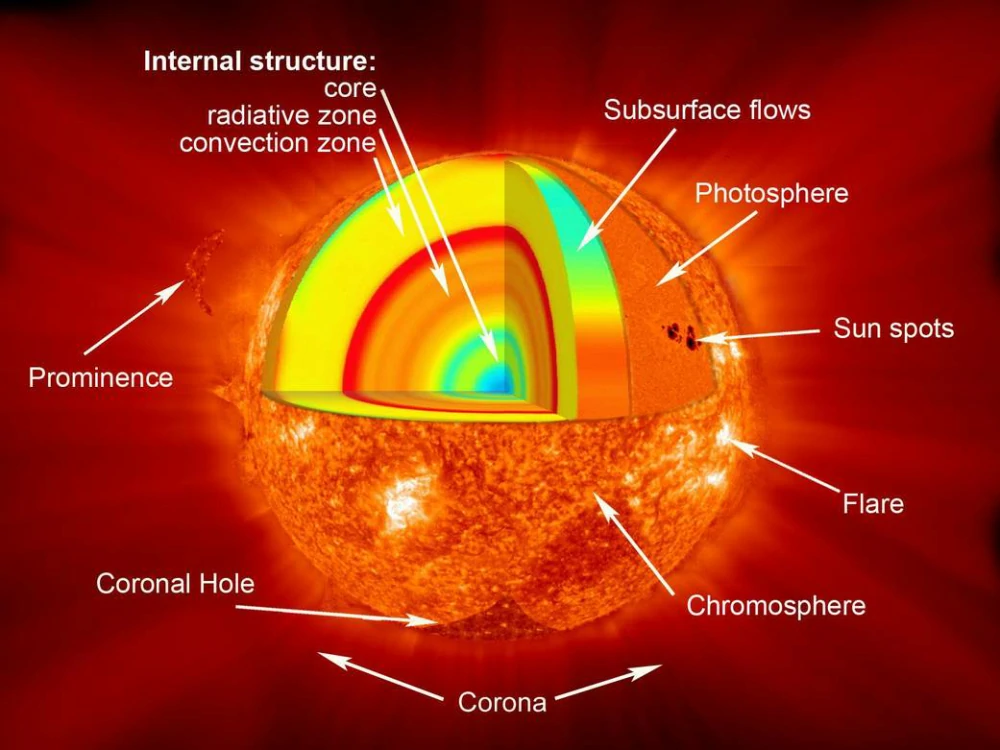
Heat Transfer in Industrial Applications
In industrial settings, heat energy is moved through conduction, convection, and radiation, each with its own unique mechanisms and impacts on material and system design.
Conduction: The Direct Heat Pathway
Conduction is the transfer of heat through direct molecular contact. Materials with high thermal conductivity, like copper (around 401 W/m·K), are used when quick heat dissipation is needed. On the other hand, materials with low conductivity, such as polystyrene (about 0.033 W/m·K), work well as insulators.
Convection: Flowing Thermal Energy
Convection happens in liquids and gases. When a fluid is heated, it becomes less dense and rises, while cooler fluid moves down to take its place, creating a cycle. The rate of convective heat transfer depends on the fluid properties and flow conditions.
Radiation: Heat Exchange Over Distance
Radiation involves radiant energy traveling as electromagnetic waves, which include visible light and infrared radiation. Every surface emits heat radiation based on its emissivity and the fourth power of its temperature, according to the Stefan-Boltzmann law (5.670367 × 10^{-8} W/m^2K^4).
Understanding these heat transfer rates and methods allows industries to improve efficiency and control in processes such as heating, often using hot air systems, and in manufacturing, where precise temperature control is essential.
The Process of Conduction
How Heat Moves Through Conduction
Heat moves through conduction when materials touch each other directly. In manufacturing, heat sinks use this principle to cool electronic components. These sinks are often made of aluminum, which has a thermal conductivity of about 237 W/m·K. This means aluminum can quickly transfer heat from electronics to the air.
The Science Behind Conduction
When heat energy moves from a warmer area to a cooler one within a metal, it’s because of conduction. The speed at which this happens depends on three things: the material’s thermal conductivity, the size of the area through which heat passes, and the difference in temperature. Fourier’s law explains how this works.
Conduction's Role in Welding
In welding, conduction is very important. It controls how fast heat spreads from the weld spot into the surrounding metal. This affects both the quality of the weld and how quickly the metal cools down.
Convection's Role in Thermal Management
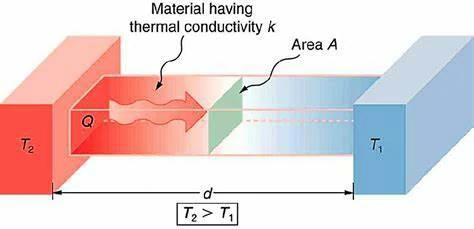
How Heat Moves Through Convection
Convection moves heat from warmer areas to cooler ones using fluids. In HVAC systems, warm air rises because it’s lighter, while cooler, heavier air sinks. This cycle is called natural convection.
Forced Convection in Cooling Systems
Forced convection uses fans or pumps to move air or water, improving heat transfer. In computers, fans speed up air movement, removing heat from important parts faster.
Convection in Large-Scale Systems
In power plants and building climate control, convection helps distribute heat efficiently. Engineers use specific heat capacity and convection heat transfer coefficients to design and optimize these systems, ensuring consistent temperatures for comfort and stability.
Heat Transfer Without Direct Contact
How Heat Moves Through Radiation
Radiation transfers heat energy from one body to another without a medium. This happens through electromagnetic waves, allowing sunlight to reach Earth through space.
The Science Behind Radiation
Unlike conduction or convection, radiation doesn’t need atoms or molecules to spread. Any object above absolute zero emits radiation. The amount of energy radiated depends on the object’s surface temperature and emissivity, as described by the Stefan-Boltzmann law. For example, the sun at about 5,778 K radiates approximately 63.3 million W/m² due to its high temperature and near-perfect emissivity.
Radiation in Industrial Design
Understanding radiation is crucial in industrial design for creating materials and coatings that reflect or absorb radiant energy. This knowledge helps optimize energy use in buildings and vehicles and is essential in spacecraft design. Precise control of radiant heat transfer enhances system efficiency and safety.
Radiation: Transferring Heat Through Space
Heat Transfer Within Earth
Earth’s interior shows how heat transfer works. The core can reach temperatures of 5,000 degrees Celsius. Heat moves through conduction in the solid inner layers and convection in the molten outer core. These processes drive tectonic plate movement and cause volcanic activity. The mantle’s viscosity and the temperature gradient from the core to the crust are important in this complex system.
Material Design and Heat Transfer in Engineered Systems
In engineered systems, material design is crucial for managing heat transfer. Materials with high thermal conductivity, like silver at about 430 W/m·K, help dissipate heat efficiently in electronics. Low conductivity materials, such as aerogels at 0.017 W/m·K, act as insulators in aerospace and construction. Manufacturers must consider the environmental impact of materials, choosing sustainability without sacrificing thermal management effectiveness.
Heat Movement in Atmospheric Phenomena
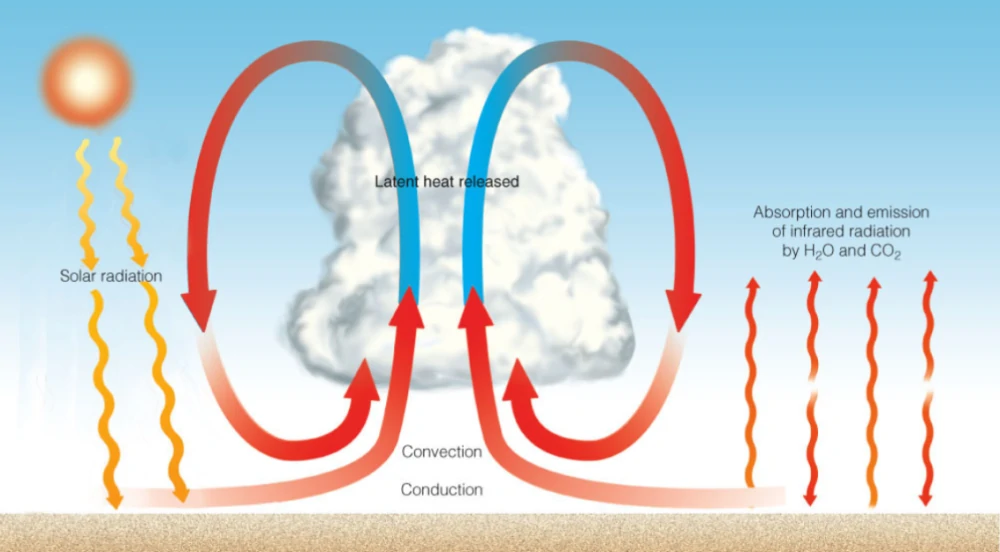
Wind and Heat Transfer
Wind is caused by heat transfer in Earth’s atmosphere. Heat moves from warm areas to cooler ones, creating wind.
How the Sun Creates Wind
The sun heats the Earth’s surface, warming the air above it. This warm air rises because it’s less dense. Cooler, denser air moves in to replace it, creating a convective cycle. This cycle is affected by Earth’s rotation and how different parts of the planet absorb sunlight.
Technical Parameters of Wind Formation
The speed of convection depends on the temperature difference between air masses and the specific heat capacity of air, which is about 1.005 kJ/kg·K at sea level.
Three Types of Heat Transfer
Heat moves in three main ways: conduction through materials, convection by moving fluids like air and water, and radiation as electromagnetic waves.
Importance in Thermal Management
Understanding these processes is crucial for designing systems that manage heat efficiently across various industries.
What is convection, and how does it work?
Convection is the transfer of heat by the movement of fluids (liquids or gases). It can be natural or forced. In natural convection, fluid movement is driven by buoyancy forces due to temperature differences. In forced convection, a fan or pump moves the fluid.
Which mode of heat transfer is the most efficient?
The efficiency of heat transfer depends on the specific situation. Conduction is efficient in solids, convection in fluids, and radiation can be very efficient in a vacuum or through transparent media.
Why is heat transfer important in engineering?
Heat transfer is crucial in engineering for designing efficient heating and cooling systems, managing thermal energy in electronic devices, ensuring structural integrity of materials at high temperatures, and in many other applications where temperature management is important.
How can I prevent heat loss in my home?
To prevent heat loss, you can improve insulation to reduce conduction, seal gaps and cracks to minimize convection, and use materials that reflect radiant energy to reduce heat transfer by radiation.
Can you explain how radiation works?
Radiation is the transfer of heat through electromagnetic waves. It does not require a medium and can occur through a vacuum. All objects emit radiant energy, and the amount of energy emitted increases with temperature.
